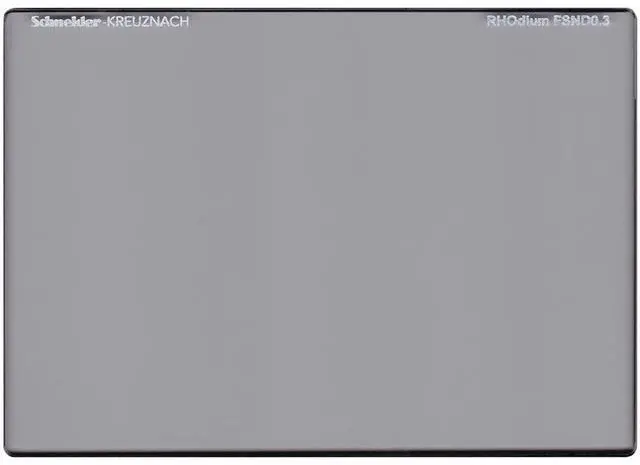Over the years, Schneider's RHOdium Full Spectrum Neutral Density (FSND) filters have set a high standard in the industry, specifically designed to meet the critical color requirements of advanced 4K, 6K, and 8K resolution cameras. With the significant advancements in digital sensor technology, issues with IR leakage have been greatly reduced. However, these high-resolution sensors can still experience IR leakage within the far-red component of the visible spectrum and the near IR. This is where Schneider's RHOdium FSND filters come into play, providing a solution for cinematographers seeking a truly neutral ND that effectively controls the IR within the full visible spectrum and into the near infra-red.
These durable and reliable filters are crafted to finer flatness/parallelism specifications than ever before, ensuring they can resolve even the finest detail. Schneider has ingeniously designed an ultra-thin neutral density interlayer, sandwiched between two sheets of crystal-clear Schott water-white glass. This thin interlayer results in superior transmitted wavefront flatness/parallelism, while the coating is protected from abrasions by being encapsulated between the glass layers, making it more resilient to the rigors of the rental market.
RHOdium FSND filters are the first to undergo a lab-tested tristimulus scan, a more stringent color measurement method than those previously used. This process verifies neutrality by utilizing a colorimetric algorithm that compares samples to perfectly neutral light, resulting in unprecedented accuracy.
Whether you're a cinematographer or photographer working with the latest digital image capture technology or traditional film, these versatile FSND filters are ideally suited for all your Neutral Density needs, ensuring complete control over the visible spectrum. In the realm of physics, the Greek letter rho symbolizes the unit of Optical Density, and Rhodium is part of the "Platinum Group of Metals" on the periodic table of the elements, reflecting the high-quality and effectiveness of these filters.
